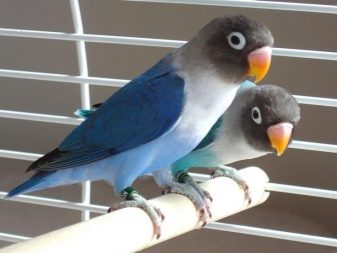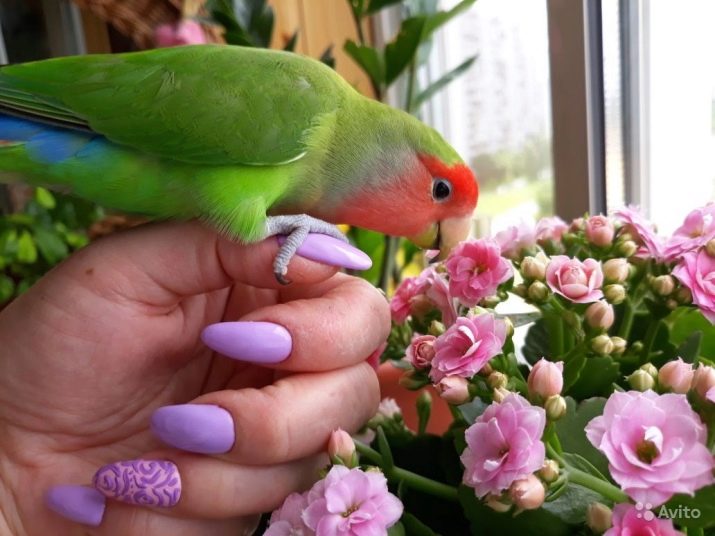How many years do lovebirds live?

Small colored birds often become pets. Lovebirds are unpretentious and beautiful, so they are chosen much more often than others as a parrot. Usually, parrots are bought in pairs, but even a lonely bird can please the owner for many years. Before purchasing, you should definitely study the question of life expectancy and all the factors that affect this.

Life span
Lovebirds are one of the most common and popular parrots among small and medium-sized breeds. Birds live both in the wild and at home. Small parrots are known to live shorter lives than their larger counterparts.
The life span of a lovebird is about 7-15 years. The exact numbers depend on many aspects, the characteristics of the external environment and the state of health.


At home
Interesting cases are known when pairs of lovebirds lived in captivity for about 20 years. This is quite possible with proper care and good health of lovebirds. Yet the average life span of a parrot at home is 10 years. Several factors can lead to premature death.
- Various diseases. Bird watchers claim that birds are susceptible to many diseases. If you buy a lovebird from your hands, while outwardly he looks healthy - this is not a guarantee. The disease can manifest itself after the end of the incubation period.
- Inattention to the health of the parrot. At the first signs of illness, you need to urgently take the bird to a veterinarian in order to double-check everything and, if necessary, treat it. If in a pair only one parrot behaves atypically, then be sure to separate them, which will protect the lovebird's partner from infection.
- Poisoning. If you do not change food and water for a long time, then mold and fungus begin to develop there. As a result of eating spoiled food, the parrot can be seriously poisoned. Remember, lovebirds love to chew on things. Even the paint that the parrot chipped off the cage with its beak can become the cause of the poisoning.
- Improper nutrition. Lovebirds can eat any food, but their diet still needs to be closely monitored. Often a bird will eat something that is harmful to its health.
- Dangerous household appliances in the parrot's access. If you let the bird out of the cage, then it will fly everywhere and gnaw everything. For example, lovebirds can gnaw through a live wire or drown in an open pot of soup.
- Birds need time to adjust to the environment in which they find themselves. The lovebird should get used to the arrangement of objects in your home. If you are moving something large, be sure to show it to the bird. A parrot can inadvertently fly into an unfamiliar obstacle and crash.
- Open windows pose a great danger to the parrot. Even a tamed and obedient bird can fly out or fall out due to carelessness. This almost always leads to death, since the domestic lovebird cannot adapt to life in the wild.
- Fear. Lovebirds, like most parrots, are very shy. Intense experiences (anxiety, fear) can lead to sudden cardiac arrest. In this case, it is impossible to save the lovebird.
- Other pets. Even if a cat and a dog do not eat parrots, this does not mean that they do not pose a threat. Even in friendly play, a large animal can hit a lovebird with its paw. The body of a parrot is quite fragile, it can die as a result of injury.

In nature
Untamed lovebirds live much shorter lives than their domestic counterparts. They rarely last up to 10 years. The natural habitat is tropical Africa and Madagascar. The hot and humid climate in this area provides a varied food and sufficient drinking water for lovebirds.
Wildlife poses many hazards and risks for small birds, resulting in a reduced average lifespan. The reasons for early death can be as follows:
- during periods of drought, it is difficult for small lovebirds to fly long distances to find water; to reduce the population, some farmers poison the water, even if the bird finds drink, it is not a fact that it will not die from it;
- birds often plunder farm fields, so people destroy them as pests;
- rather violent fights for territory occur within the species flock, as a result, injured individuals die;
- attacks of predators - vultures, owls, eagle owls and other large birds hunt lovebirds day and night.

How long do parrots live without a pair?
There is a belief that representatives of the species live only together, and otherwise they die of melancholy. Realities are more prosaic, a parrot can live without a pair.
With proper care, the lovebird will enjoy the company of the owner and live the same 7-15 years as with a relative.
A solitary bird needs to be given a lot more attention. Lovebirds in a couple entertain each other. The owner must take on this role.

The first 2-3 days after you bring the bird into the house, do not touch it too much. The lovebird will be busy getting to know new living conditions, but at the end of the adaptation period, be ready to do everything together with the bird. Play and interact with the bird every day. It is worth playing not only in the cage, but also outside it. Let the lovebird fly around the room, but first completely secure it.
If the parrot is always in the cage, then its physical development will reverse, which can lead to early death.

It is necessary to equip the cage with toys such as:
- swing;
- bells;
- ropes and tapes;
- toys that rustle.

How to take care of it properly?
Lovebirds are unpretentious, but still need a comfortable and safe environment.You need to pay attention to the bird and give it care. It is worth adhering to some care recommendations.
- The cage should be installed where there are no drafts. Take care of good lighting, no direct sunlight. Use artificial lighting only in the autumn-winter season, when there is very little natural light.
- The cage should not be placed near the battery to prevent the lovebirds from overheating. Parrots are quite sociable and love to observe everything, so place their house at about the level of your eyes. So even a parrot without a pair will not feel lonely if you just stay with him in the same room.
- Maintain the air temperature within + 18– + 25 ° С. The light in the room must be soft, otherwise the birds will be afraid of it. Lovebirds love to explore and explore new things. It is very useful to place curly, creeping flowers on the walls. Avoid poisonous plants.
- The main house of the parrot is the cage. It should be large and spacious, especially when it comes to a pair of lovebirds. Approximate parameters for one - 80x30x40 cm and for a pair - 100x40x50 cm. There should be enough space for the flight for at least two wing strokes.
- Inside, install not only drinkers and feeders, perches, but also various toys. Avoid plastic items when setting up your cage. Pet stores even sell special edible bird toys. This will protect your pet from poisoning. You need to clean the bird house 1-3 times a week.
- Use medium-sized parrot cereal mixes for nutrition. Sift the purchased food before use. The lack of vitamins is compensated for by fruits and vegetables; you can give nuts and sprouted wheat, oats. Treat your bird to parsley and dandelion leaves more often. To replenish the deficiency of minerals, give the bird crushed eggshells, but pre-calcine them in a pan or boil them.
- The daily norm is 2-3 tsp. stern. Regular complementary foods can be added at the rate of 0.5 tsp. per individual. Overeating for lovebirds is quite dangerous, so you need to carefully monitor the diet.


Lovebirds should not be given food such as:
- persimmon, mango, avocado, papaya;
- candied fruits;
- meat, fish, seafood;
- spicy food;
- fatty food;
- potato;
- fruit pits;
- branches;
- garlic and onions.
With proper care and constant attention, lovebirds can live much longer than average. Do not leave birds alone for a long time. After work, always let them out of the cage, interact and play with the birds.

Lack of attention and communication are fatal to lovebirds.
For how many years lovebirds live, see the next video.









My pink-cheeked lovebird lived for exactly 15 years. And I am sure: I would have lived even longer, but an accident happened. It was the best, without exaggeration, a parrot in the world. It was given to me as a completely chick (1 month old), he quickly became tame. I constantly let him out, he could fly safely all day, he was not afraid to leave him alone. He had a very varied diet and a lot, a lot of attention, especially from me. Romik loved to sleep on my chest, or when I was sitting on the couch. Sometimes I specially opened the cell at night so that he woke me up in the morning. He woke up with the dawn of the sun, flew out with a loud cry, and then went to sleep with me, pecking slightly before that. He loved me very much, and I loved him. Everyone was crazy about this parrot and were amazed that an ordinary yellow baby could be like that. And this is such a ridiculous death.Although it is worth saying, he began to fail a little, somewhere he was already undershot, his vision in the dark became worse, but Romik was still quite cheerful and, I think, he would have held out for 3 years. But it turned out that way. The day he died is the worst day in my life ... Love your parrots, and they will love you, because they know exactly what it is. Sleep well, Romik ... I will never forget you. You are the best thing that has happened in my life for these 15 years.